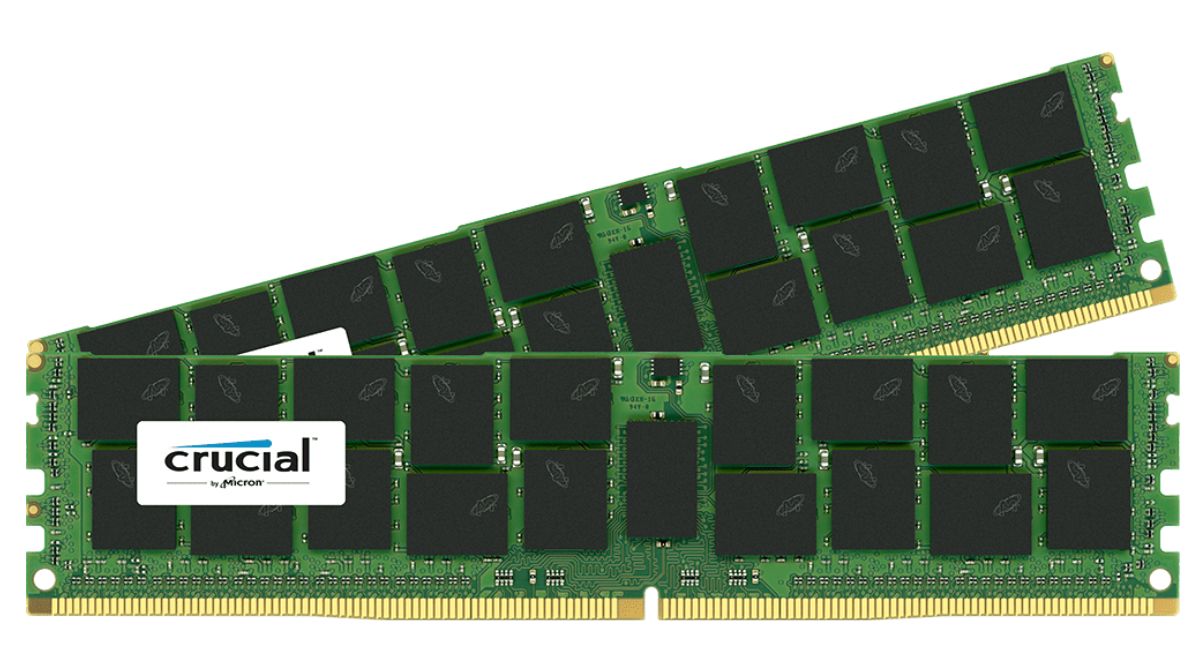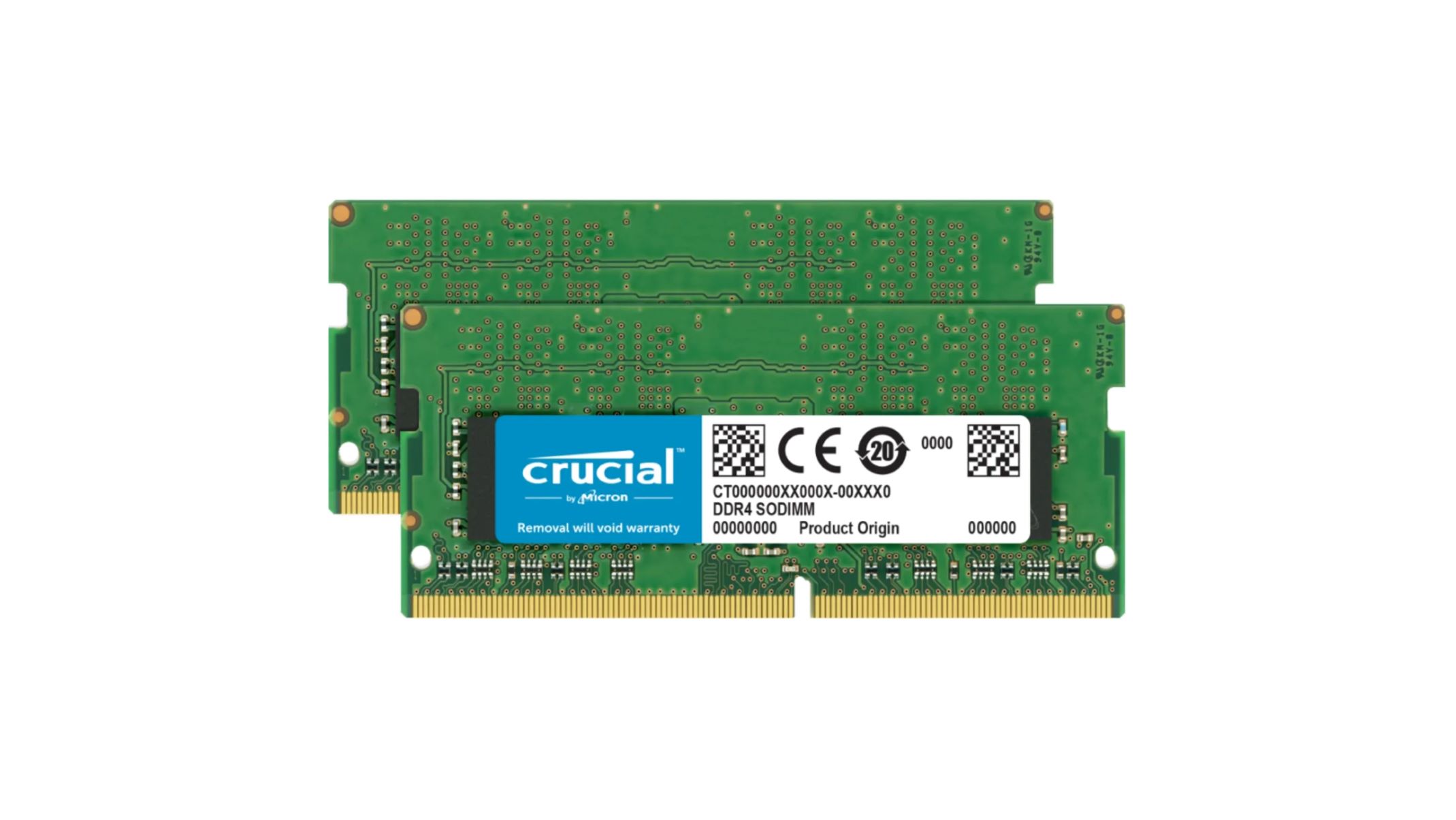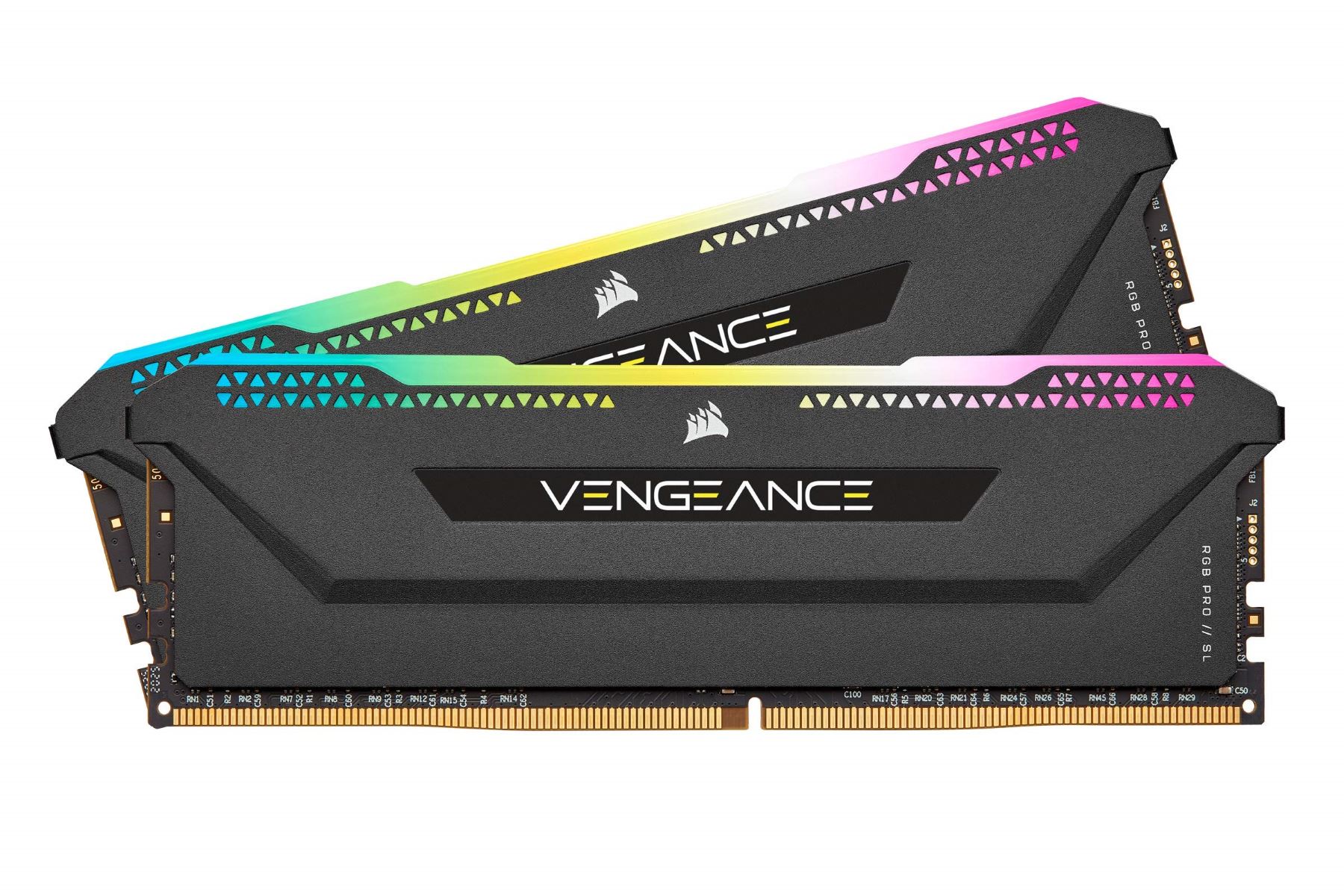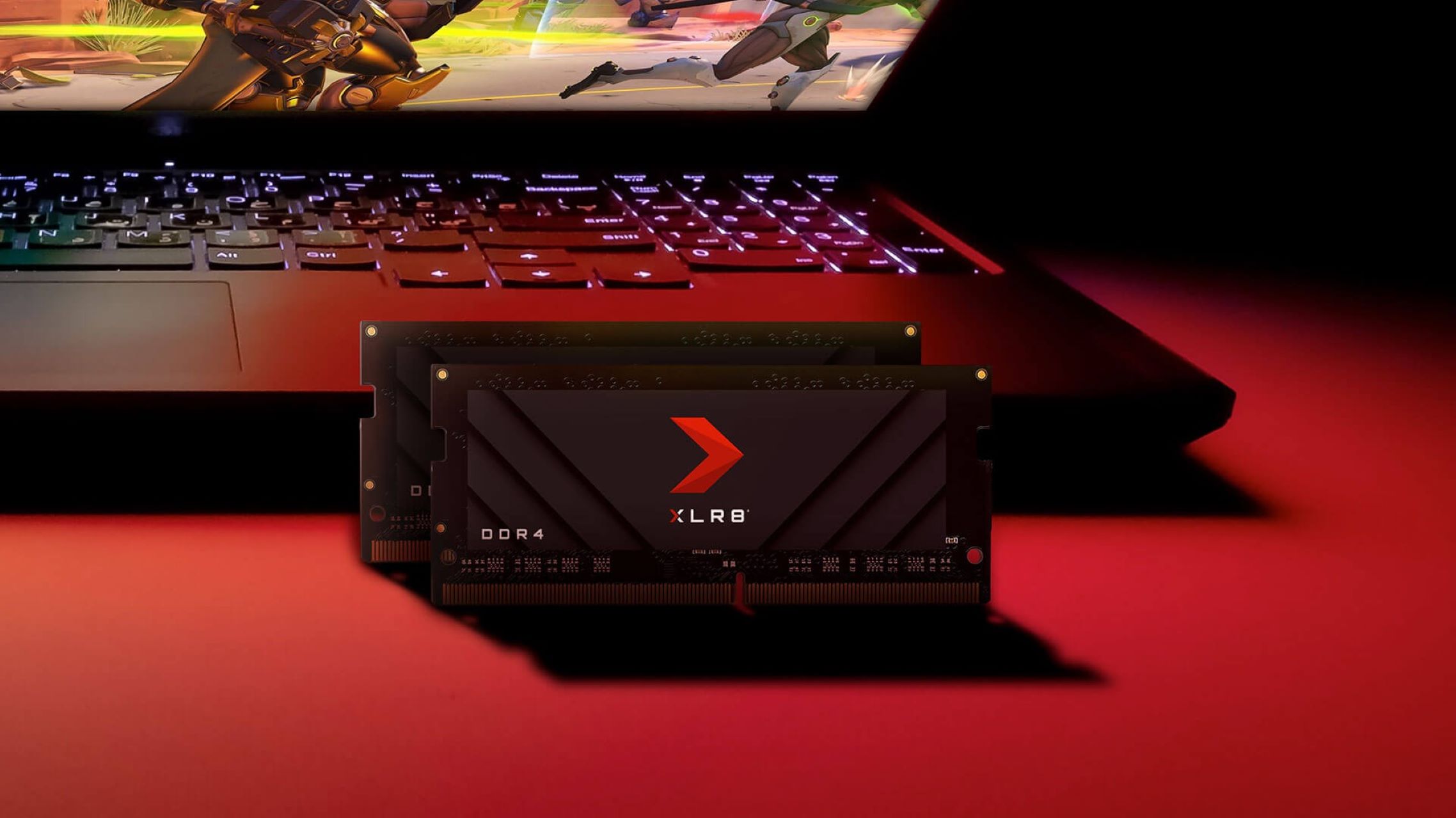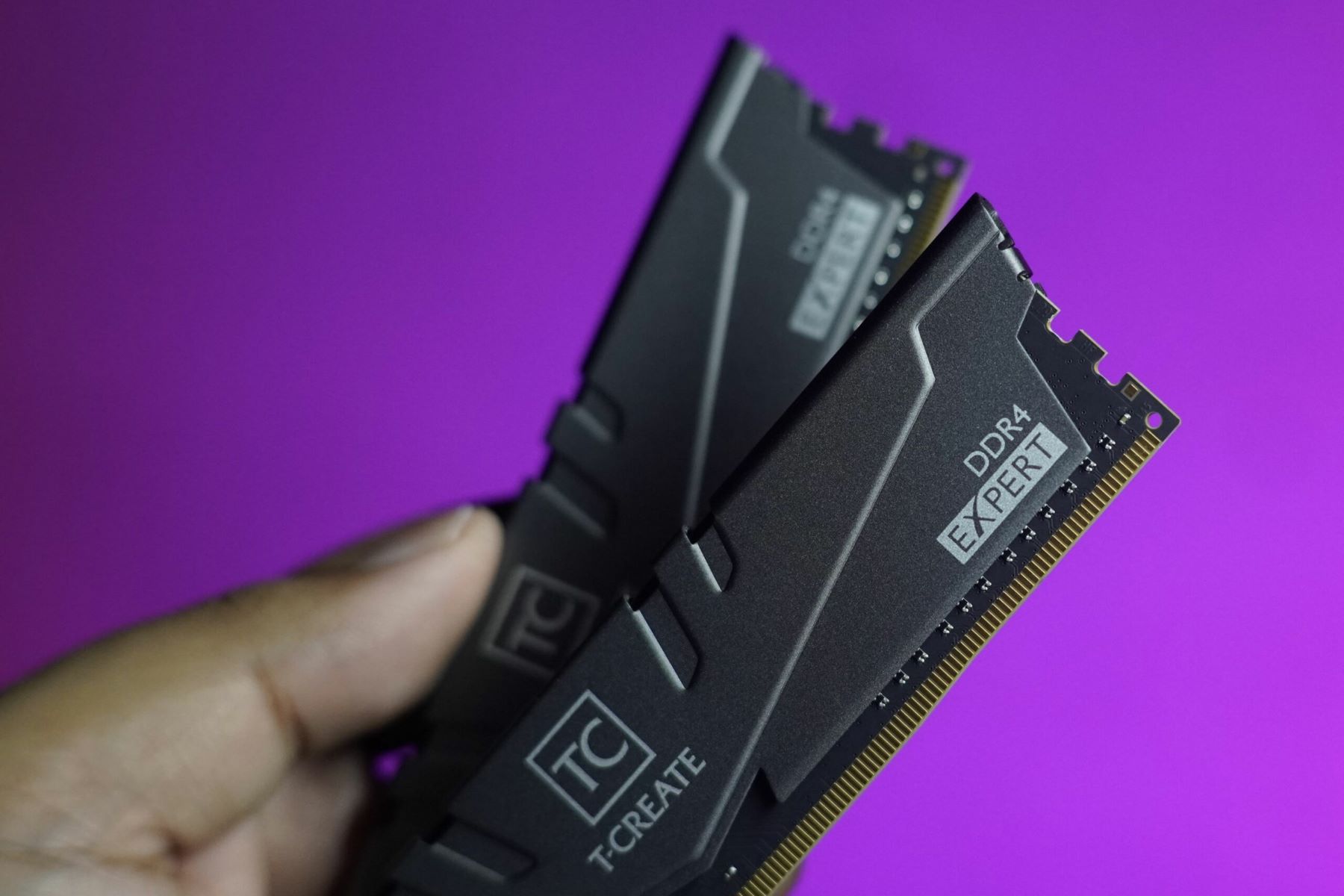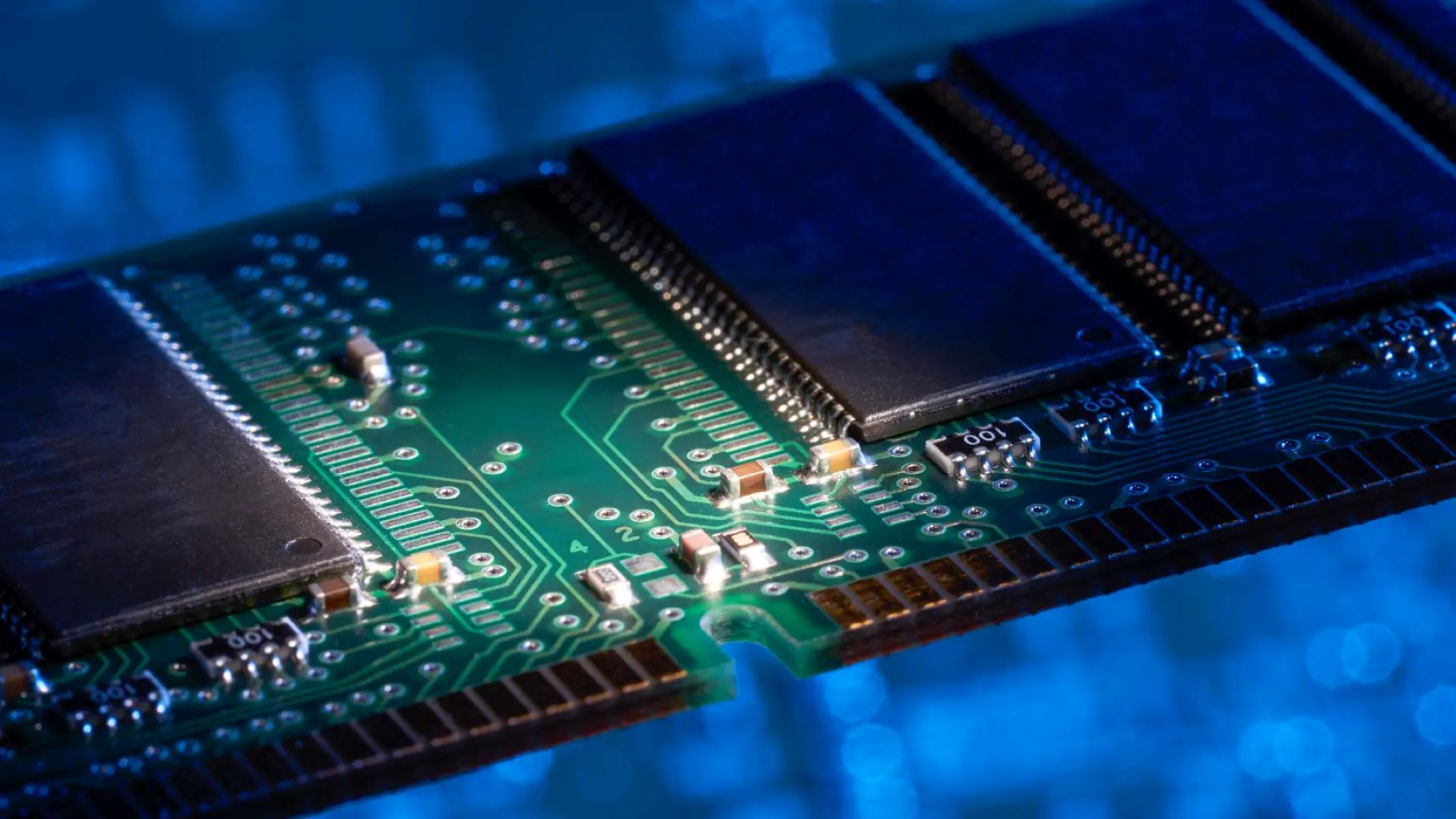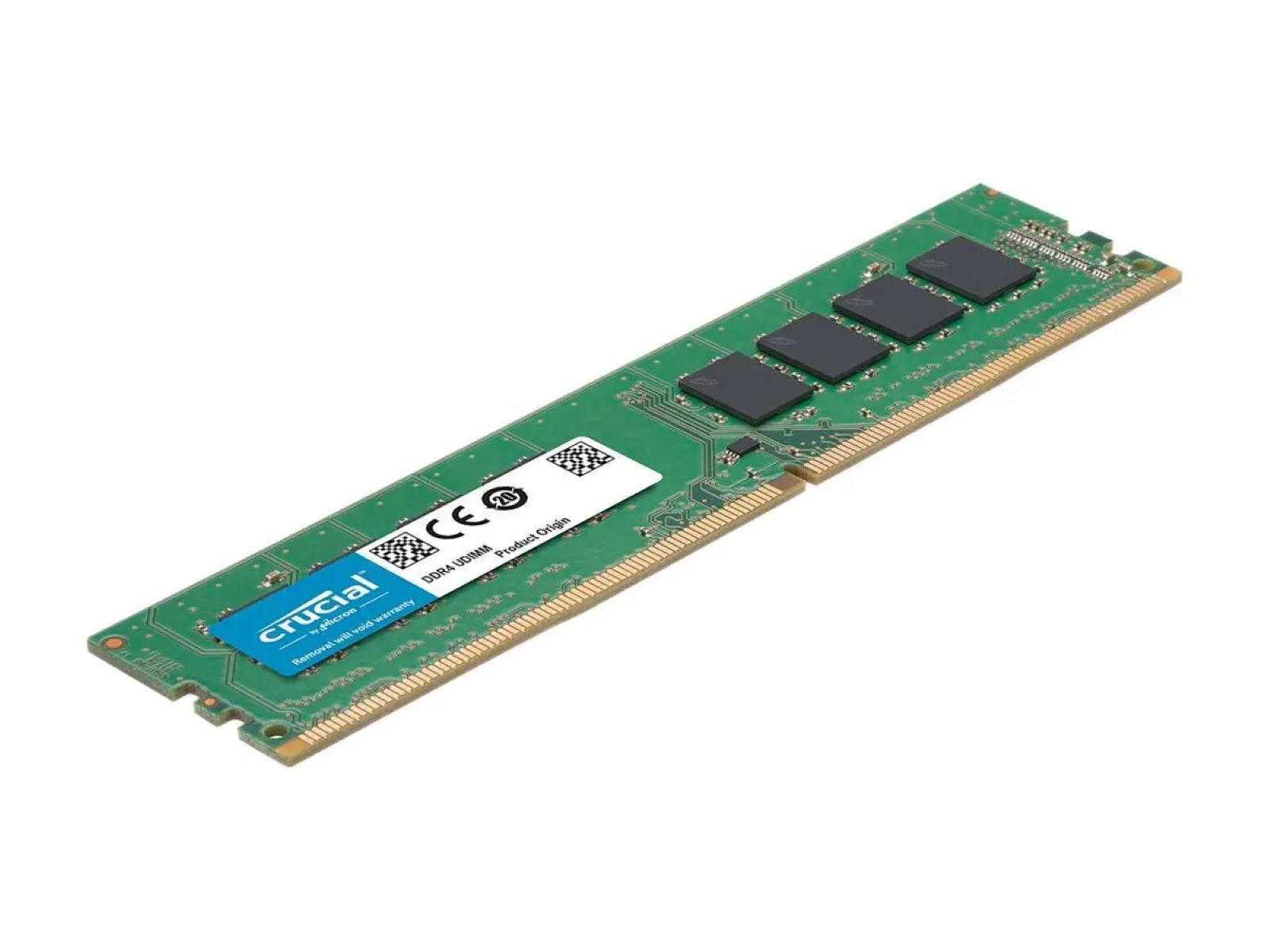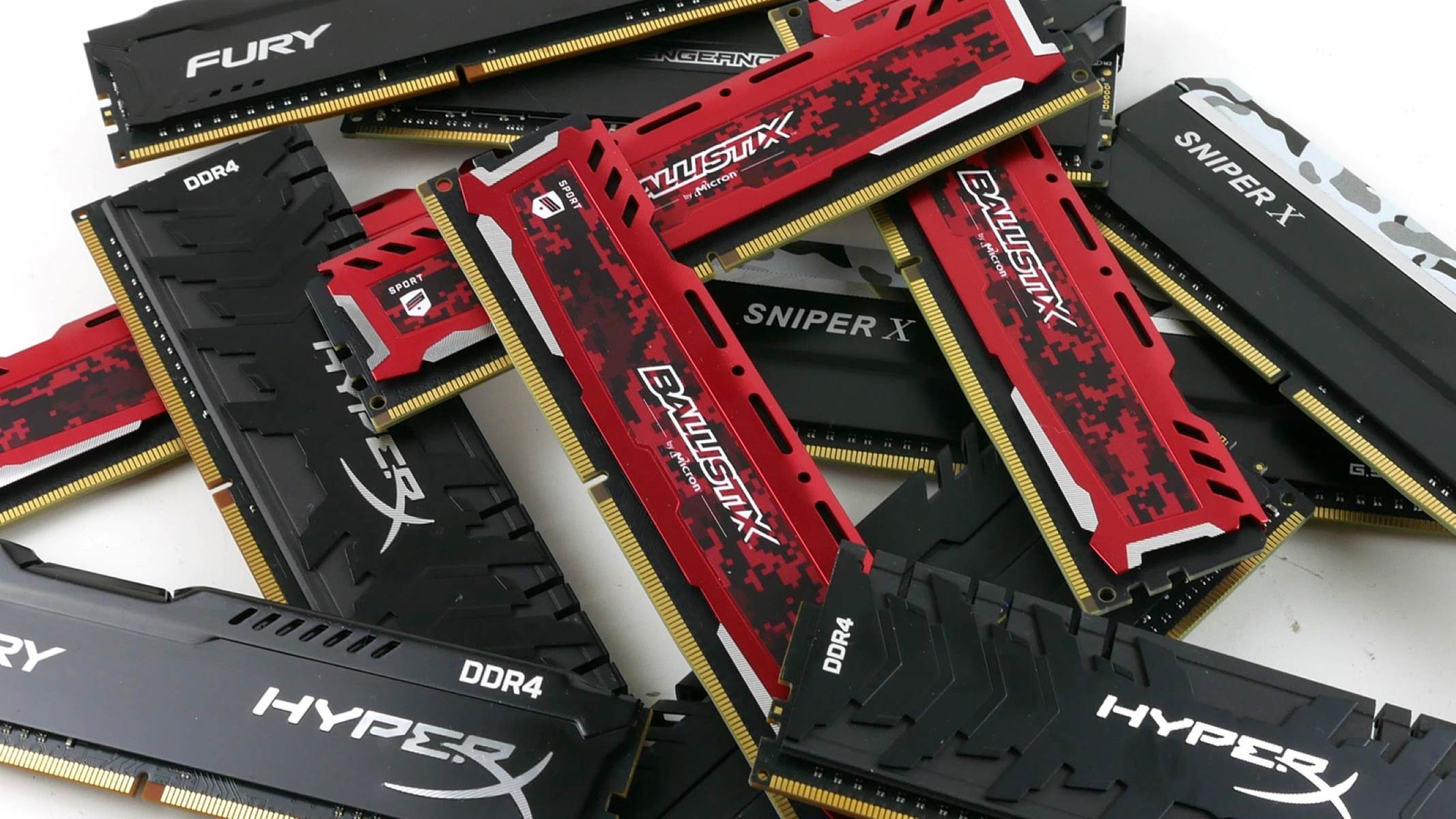Introduction
Technology is constantly evolving, and one area that has seen significant advancements is computer memory, specifically RAM (Random Access Memory). As we continue to demand faster, more efficient computers, the development of DDR4 RAM has become a game-changer in the world of computing. DDR4, short for Double Data Rate 4, is the fourth generation of DDR RAM and offers several improvements over its predecessors.
In today’s digital age, we rely heavily on our computers to perform a wide range of tasks, from simple browsing to complex data processing. RAM plays a crucial role in this by providing temporary data storage that allows the processor to quickly access and manipulate information. The introduction of DDR4 RAM has taken the performance of computers to a whole new level.
DDR4 RAM stands out primarily for its improved data transfer rates. It offers faster speed compared to DDR3 RAM, resulting in smoother multitasking, quicker loading times, and better overall system performance. With DDR4, you can say goodbye to frustrating lag and delays, especially when using resource-intensive applications or running multiple programs simultaneously.
Another significant advantage of DDR4 is its increased bandwidth. It allows for a higher volume of data to be transferred simultaneously, which is particularly beneficial for tasks that require heavy data processing, such as gaming, video editing, and professional software applications. This enhanced bandwidth ensures seamless performance even under demanding workloads, enabling users to enjoy smoother and more responsive experiences.
Furthermore, DDR4 offers higher memory capacity, allowing for more storage space per module. This is a significant improvement over previous generations, as it allows users to handle larger datasets and run memory-intensive applications without running out of available memory. Whether you’re a professional content creator or a power user, the increased memory capacity of DDR4 ensures that you have the resources to handle even the most demanding tasks.
One of the key considerations for any technology is power consumption, and DDR4 excels in this area. Compared to DDR3, DDR4 RAM operates at a lower voltage, resulting in reduced power consumption. This not only contributes to energy efficiency but also helps in generating less heat, which in turn extends the lifespan of your system components and ensures stable operation.
DDR4 RAM is designed to be backward compatible, meaning it can be used in systems that previously used DDR3 or DDR3L RAM. This makes it a viable choice for those looking to upgrade their existing systems without investing in a full motherboard and processor upgrade. Additionally, with DDR4 being the latest standard, it ensures that your system remains future-proofed for years to come, supporting upcoming advancements in technology.
In summary, DDR4 RAM provides improved performance, larger bandwidth, increased memory capacity, lower power consumption, and compatibility with older systems. With these advantages, it’s no surprise that DDR4 has become the de facto standard in computer memory. Whether you’re a tech enthusiast, a gamer, or a professional, upgrading to DDR4 RAM can significantly enhance your computing experience and unlock the true potential of your system.
What is DDR4?
DDR4, or Double Data Rate 4, is the fourth generation of DDR RAM (Random Access Memory) technology. It is the successor to DDR3 RAM and offers several improvements in terms of speed, performance, and efficiency. DDR4 RAM has become the standard memory module used in modern computers, laptops, and servers.
The primary purpose of RAM is to provide temporary storage for data that the computer processor needs to access quickly. When you open applications, load files, or perform any tasks on your computer, the data is temporarily stored in RAM for fast retrieval and processing. The speed and capacity of the RAM have a significant impact on the overall performance and responsiveness of your system.
DDR4 RAM introduces a range of enhancements compared to its predecessor. One notable improvement is the increased speed. DDR4 RAM operates at higher clock speeds, resulting in faster data transfer rates. This means that data can be read from and written to RAM at a much quicker pace, resulting in improved system performance and reduced latency.
Furthermore, DDR4 RAM offers higher bandwidth, which refers to the amount of data that can be transferred simultaneously. This increased bandwidth allows for smoother multitasking and faster data processing, making DDR4 ideal for resource-intensive tasks such as gaming, video editing, and running complex software applications.
DDR4 RAM also boasts higher memory capacity. Memory modules can now support larger sizes, allowing for more data to be stored. This is particularly advantageous for users who work with large datasets or run memory-intensive applications. It provides ample space for processing and storing complex information, ensuring smooth operation even under demanding workloads.
In terms of power consumption, DDR4 RAM is designed to be more energy-efficient compared to DDR3 RAM. It operates at a lower voltage, meaning it requires less power to function. This not only reduces power consumption but also generates less heat, resulting in cooler and more stable operation. Additionally, the lower voltage of DDR4 RAM contributes to longer battery life in laptops and other portable devices.
Another important aspect of DDR4 RAM is its backward compatibility. While DDR4 RAM does require a motherboard that supports DDR4 slots, it can also work on systems that previously used DDR3 or DDR3L RAM. This provides flexibility for users who want to upgrade their RAM without incurring the cost of a full system upgrade. However, it is worth noting that DDR4 RAM will only operate at DDR3 speeds on systems with DDR3-compatible slots.
In summary, DDR4 is the latest generation of DDR RAM, offering improved speed, higher bandwidth, increased memory capacity, lower power consumption, and backward compatibility. These advancements make DDR4 a superior choice for users seeking optimal performance, efficiency, and future-proofing for their computers. By upgrading to DDR4 RAM, you can ensure a more responsive and powerful computing experience.
Improved Performance
DDR4 RAM has brought significant improvements in terms of performance compared to its predecessor, DDR3. These improvements have a direct impact on the overall speed and efficiency of your computer system.
One of the key advantages of DDR4 RAM is its faster data transfer rates. With higher clock speeds and improved architecture, DDR4 RAM can deliver data at a much quicker pace. This means that the processor can access the data stored in RAM more rapidly, resulting in faster application loading times, smoother multitasking, and overall snappier system responsiveness.
The enhanced performance of DDR4 RAM is particularly noticeable when it comes to resource-intensive tasks, such as gaming and multimedia editing. DDR4’s increased speed allows for quicker rendering and processing of complex graphics, resulting in a more immersive gaming experience and smoother video editing workflow.
In addition to faster speeds, DDR4 RAM also offers improved data integrity. It incorporates error-correcting code (ECC), which helps detect and correct errors in data transmission. This ensures that the data stored in RAM is accurate and reliable, reducing the risk of system crashes or data corruption.
Furthermore, the increased bandwidth of DDR4 RAM allows for more data to be transferred simultaneously. This is particularly beneficial for applications that require simultaneous access to large amounts of data, such as database management systems or scientific simulations. The higher bandwidth of DDR4 ensures that data flows smoothly between the RAM and the processor, minimizing bottlenecks and improving overall system performance.
DDR4 RAM also benefits from improved latency, which refers to the time it takes for data to be accessed from RAM. The lower latency of DDR4 RAM allows for faster retrieval of data, resulting in improved real-time responsiveness. This is especially important for tasks that require quick data access, such as gaming or running virtual machines.
Moreover, the higher memory capacity of DDR4 RAM contributes to improved performance. With larger memory modules available, you can store more data in RAM, reducing the need for frequent data transfers between RAM and other storage devices. This leads to faster and smoother operations, especially when working with large files or executing memory-intensive applications.
In summary, DDR4 RAM brings substantial improvements in performance over its predecessor. Its faster data transfer rates, increased bandwidth, improved data integrity, lower latency, and higher memory capacity all contribute to a more efficient and responsive computing experience. Whether you’re a gamer, a content creator, or a professional user, upgrading to DDR4 RAM can significantly enhance the performance and responsiveness of your system, allowing you to accomplish tasks more quickly and efficiently.
Increased Bandwidth
One of the key advantages of DDR4 RAM is its significantly increased bandwidth compared to its predecessor, DDR3. The increased bandwidth allows for faster and more efficient data transfer, resulting in improved system performance and responsiveness.
Bandwidth refers to the amount of data that can be transferred simultaneously between the RAM and the processor. With DDR4 RAM, the bandwidth has been greatly expanded, allowing for more data to be transmitted in a given time period. This increased bandwidth is particularly beneficial for tasks that require high data throughput, such as gaming, video editing, and running complex software applications.
The increased bandwidth of DDR4 RAM enables smoother multitasking. With larger amounts of data being transferred simultaneously, tasks can be executed more efficiently, resulting in reduced lag and improved overall system responsiveness. This means you can seamlessly switch between applications, run multiple resource-intensive programs simultaneously, and enjoy a more fluid computing experience.
In gaming, increased bandwidth provided by DDR4 RAM can significantly enhance performance. Games often require fast and continuous data transfer between the RAM and the graphics card. With DDR4’s larger bandwidth, the graphics card can access the required data more quickly, resulting in smoother frame rates, reduced input lag, and a more immersive gaming experience.
The larger bandwidth of DDR4 RAM is also advantageous for content creators who work with large files, such as high-resolution images or 4K videos. DDR4’s increased bandwidth allows for quicker data access and transfer, reducing the time needed for rendering, encoding, and processing. This leads to more efficient workflows and enables content creators to work with larger, more complex projects without sacrificing performance.
Furthermore, DDR4’s increased bandwidth is beneficial for professionals who work with memory-intensive applications, such as engineers or data analysts. These applications often require simultaneous access to large datasets and complex calculations. With DDR4’s larger bandwidth, these applications can quickly retrieve and process the necessary data, improving productivity and reducing computation time.
It is worth noting that to fully utilize the increased bandwidth of DDR4 RAM, it is important to ensure compatibility with other components of your system, such as the motherboard, processor, and graphics card. A system with compatible components will maximize the benefits of DDR4’s increased bandwidth and allow for optimal data transfer rates.
In summary, DDR4 RAM offers a significant increase in bandwidth compared to DDR3, allowing for faster and more efficient data transfer. This increased bandwidth enhances multitasking capabilities, improves gaming performance, facilitates smoother content creation workflows, and enhances productivity for professionals working with memory-intensive applications. Upgrading to DDR4 RAM can unlock the full potential of your system and provide a noticeable boost in overall performance.
Higher Memory Capacity
One of the notable advantages of DDR4 RAM over its predecessor, DDR3, is its higher memory capacity. DDR4 RAM modules offer larger storage sizes, allowing for more data to be stored and accessed at any given time. This increase in memory capacity provides several benefits for users who require extensive storage capabilities.
The higher memory capacity offered by DDR4 RAM is particularly advantageous for users who work with large datasets or memory-intensive applications. Whether you’re a professional content creator, a data scientist, or a gamer who runs resource-demanding games and virtual reality experiences, having more RAM ensures that your system can handle the demands of your workload without running out of memory.
With the larger memory capacity of DDR4 RAM, you can handle larger projects and work with more complex data. Content creators dealing with high-resolution images, videos, or intricate 3D models can have peace of mind knowing that they have enough RAM to work with these memory-intensive files.
Additionally, professionals working with simulations, scientific calculations, or big data analysis can benefit from the increased memory capacity. DDR4 RAM allows for the storage and manipulation of larger datasets, leading to quicker data processing and more efficient workflows.
For gamers, the higher memory capacity provided by DDR4 RAM ensures a smoother gaming experience, especially when running games that require substantial memory resources. With more memory available, games can load faster, and in-game assets can be accessed more quickly, resulting in reduced stuttering, minimized lag, and improved overall performance.
Moreover, the higher memory capacity of DDR4 RAM allows for better multitasking capabilities. You can run multiple applications simultaneously without experiencing a significant slowdown in performance. This is particularly beneficial for users who regularly switch between resource-intensive programs or work with numerous browser tabs and applications open simultaneously.
It is important to note that the memory capacity of DDR4 RAM is dependent on the specific RAM modules you choose to install in your system. DDR4 RAM is available in a wide range of capacities, from 4GB up to 128GB per module. The capacity you choose should align with your specific needs and the requirements of your applications.
Ultimately, the higher memory capacity provided by DDR4 RAM empowers users to handle larger projects, work with memory-intensive applications, and enjoy a more seamless and responsive computing experience. Upgrading to DDR4 RAM with a larger memory capacity ensures that your system has the resources it needs to tackle demanding tasks and keep up with the ever-increasing demands of modern computing.
Lower Power Consumption
DDR4 RAM offers a significant improvement in terms of power consumption compared to its predecessor, DDR3. This lower power consumption has several benefits, including energy efficiency, reduced heat generation, and increased battery life for portable devices.
DDR4 RAM operates at a lower voltage than DDR3 RAM, which means it requires less power to function. This reduction in power consumption leads to improved energy efficiency, helping you save on electricity costs and reducing the environmental impact of your computer system.
The lower power consumption of DDR4 RAM also results in reduced heat generation. When RAM modules use less power, they produce less heat, which contributes to a cooler operating environment inside your computer. This is particularly important for systems with limited airflow or compact form factors, as excessive heat can lead to thermal throttling and performance degradation.
Additionally, the lower heat generation of DDR4 RAM contributes to the longevity of your system components. By operating at lower temperatures, the RAM modules and other adjacent components experience less stress, reducing the risk of premature failure and ensuring a more stable system performance over time.
Another significant advantage of DDR4’s lower power consumption is its positive effect on battery life for laptops and other portable devices. With a reduced power draw, laptops equipped with DDR4 RAM can extend their battery life, allowing you to work or enjoy multimedia content for longer periods without the need to recharge. This is particularly beneficial for individuals who frequently use their laptops on the go or in situations where access to a power outlet is limited.
It is important to note that the actual power savings of DDR4 RAM will vary depending on multiple factors, including the specific system configuration and the usage patterns of your applications. However, in general, DDR4 RAM offers a significant improvement in power efficiency compared to DDR3, making it a more environmentally friendly and economical choice for both desktop and mobile computing.
Using DDR4 RAM can also reduce the strain on power supply units (PSUs), as they won’t have to work as hard to supply the necessary power to the RAM modules. This can translate to a more reliable and efficient power delivery system in your computer, leading to improved overall stability and performance.
Overall, the lower power consumption of DDR4 RAM brings various benefits, including improved energy efficiency, reduced heat generation, increased battery life for portable devices, and less strain on power supply units. By upgrading to DDR4 RAM, you can not only enjoy enhanced performance but also contribute to a more sustainable and reliable computing experience.
Compatibility and Future-Proofing
DDR4 RAM provides compatibility and future-proofing for your computer system, ensuring that it can adapt to the latest technological advancements and remain compatible with newer hardware.
DDR4 RAM is designed to be backward compatible, meaning it can be used in systems that previously used DDR3 or DDR3L RAM. This is particularly beneficial for users looking to upgrade their existing systems without the need for a complete motherboard and processor replacement. Simply swapping out the DDR3 modules for DDR4 RAM allows for an instant performance boost without the hassle of changing other components.
While DDR4 RAM can be used in DDR3 slots, it is important to note that it will operate at DDR3 speeds in those systems due to the limitations of the older technology. To fully utilize the benefits of DDR4 RAM, it is recommended to pair it with a motherboard that supports DDR4 slots, ensuring optimal performance and speed.
Furthermore, DDR4 RAM guarantees future-proofing for your computer. DDR4 is the latest industry standard for RAM, and it is expected to remain dominant for years to come. By adopting DDR4 RAM, you can ensure that your system remains compatible with upcoming advancements in technology.
As technology advances, memory-intensive tasks require more RAM to operate smoothly. DDR4 RAM provides the necessary headroom to meet these evolving demands. Whether you are a gamer, a designer, or a professional working on resource-intensive applications, upgrading to DDR4 RAM ensures that your system has the necessary capacity to handle increasingly complex workloads.
Future software updates and applications are likely to be optimized for DDR4 RAM, taking full advantage of its improved performance and higher memory capacity. This compatibility ensures that your system will continue to run smoothly and efficiently while enjoying the benefits of the latest software advancements.
Moreover, DDR4 RAM supports higher clock speeds than DDR3, which allows for faster data transfer rates. As technology progresses, applications are likely to be developed with faster data transfer in mind. By having DDR4 RAM, your system will be prepared to handle these new advancements with ease.
When considering long-term compatibility, it is essential to invest in DDR4 RAM to future-proof your system. As technology continues to advance, DDR4 RAM will remain the go-to choice, ensuring compatibility with future hardware upgrades and software developments.
In summary, DDR4 RAM provides compatibility with older systems, allowing for easy upgrades without the need for a complete system overhaul. It also ensures future-proofing by being the latest industry standard and supporting advancements in technology. Upgrading to DDR4 RAM guarantees that your system remains compatible with the latest software and hardware updates, providing optimal performance and ensuring a longer lifespan for your computer system.
Conclusion
DDR4 RAM has revolutionized the world of computer memory with its improved performance, increased bandwidth, higher memory capacity, lower power consumption, and compatibility with older systems. The advancements offered by DDR4 RAM have significant implications for various types of users, from casual computer users to hardcore gamers and professionals in media production and data analysis.
Upgrading to DDR4 RAM can greatly enhance the performance of your computer system. With its faster data transfer rates, DDR4 RAM allows for seamless multitasking, quicker application loading times, and overall improved system responsiveness. Gamers can enjoy smoother gameplay, content creators can work with larger files more efficiently, and professionals can process complex data sets with ease.
The increased bandwidth of DDR4 RAM enables faster data transfer between the RAM and the processor, minimizing bottlenecks and ensuring smoother performance for memory-intensive tasks. Graphic-intensive applications and resource-demanding software benefit greatly from DDR4’s higher bandwidth, providing better real-time responsiveness and quicker rendering times.
DDR4 RAM’s higher memory capacity is a significant advantage for users who work with large data sets and memory-intensive applications. This capacity ensures that you have enough memory to handle complex projects without running out of space, resulting in improved efficiency and reduced need for data transfer between RAM and other storage devices.
In addition, DDR4 RAM’s lower power consumption provides energy efficiency and reduces heat generation, contributing to cooler and more stable operation. This feature is particularly valuable for laptops and portable devices, as it extends battery life and allows for longer usage on the go.
DDR4 RAM also offers compatibility with older systems, allowing for easy upgrades without the need for a complete system overhaul. This ensures that your system can adapt to the latest technology advancements, supporting software and hardware updates for years to come.
In conclusion, upgrading to DDR4 RAM is a wise investment for anyone seeking improved performance, increased bandwidth, higher memory capacity, lower power consumption, and future compatibility. Whether you’re a gamer, a content creator, or a professional user, DDR4 RAM unlocks the full potential of your system and ensures a more seamless and efficient computing experience, allowing you to work, play, and create without limitations.







